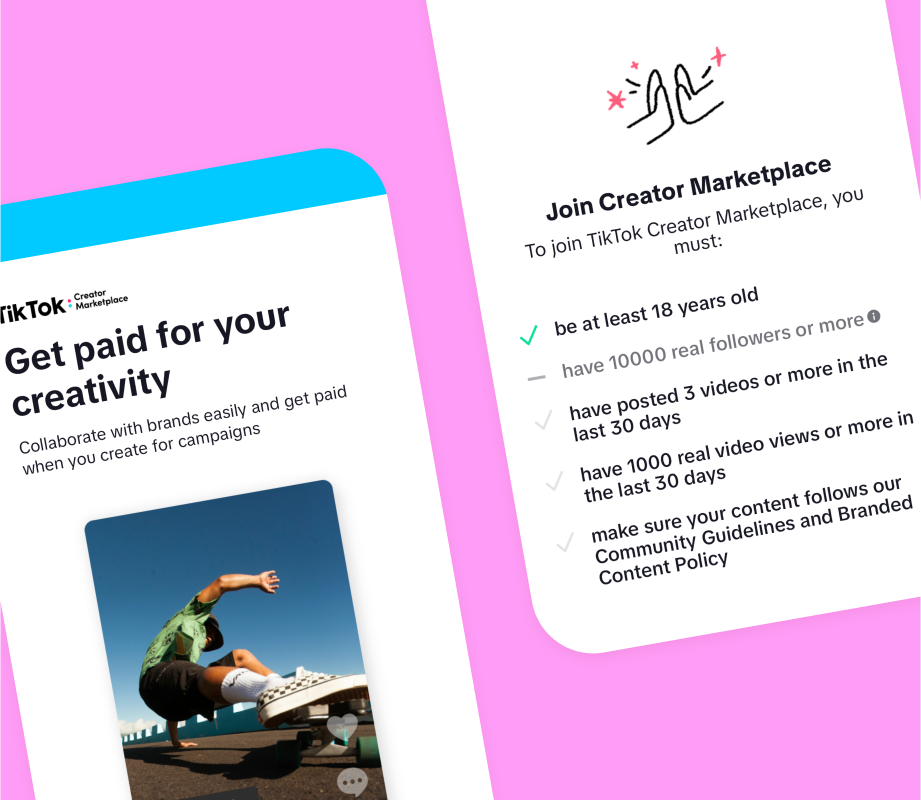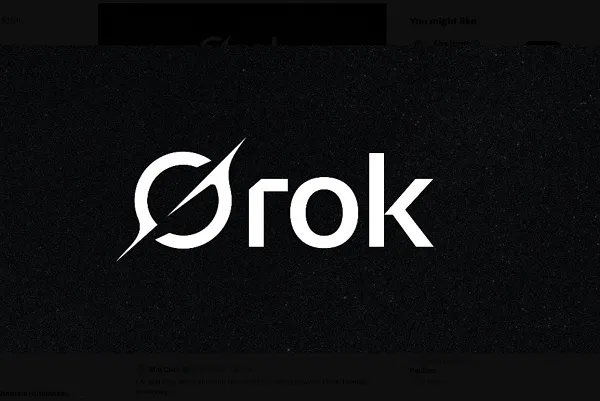How I Prepared for a Month of Social Media Content in One Day
Here's how I prepared for a month's worth of social media content in one day.


Let’s start with the facts: I don’t usually create content this way.
Most weeks, I post 3–5 times across LinkedIn, Threads, and TikTok — usually planned a few days in advance, sometimes the same day. I like having the flexibility to post when I’m inspired, not just when something’s scheduled.
But ahead of a month-long trip — part retreat, part travel — I knew I couldn’t rely on my usual workflow. I would be adjusting to new environments, exploring new cities and attending full-day team sessions. I wanted to stay visible online without scrambling to come up with new ideas mid-trip.
So I gave myself one focused day to get ahead. Not to create 30 fully polished posts — but to build a flexible, low-effort system I could pull from throughout the month.
That meant:
- Prioritizing easy formats like text posts
- Capturing video content when I had the time and energy
- Using Buffer to stay organized
- Creating backup content I could lean on when things got busy
And I’m not the only one doing this. Creators like @feelingsmethod also use Buffer to schedule a month’s worth of content in one go, then layer in spontaneous Threads or updates when inspiration strikes. That flexible approach is exactly what I was aiming for — a strong foundation, with room to breathe (and enjoy my trip).
View on Threads
This is the process I followed — not a plug-and-play formula, but a system that helped me show up consistently without burning out. If you're heading into a busy season or just want to stop scrambling every day, this approach might work for you too.
Step 1: I picked content pillars based on what was already happening
The first thing I did was make sure I wasn’t starting from scratch.
Instead of asking “What should I post?”, I looked at what was already going on in my life that could naturally turn into content. I had a few clear themes:
- Activities happening before, during, and after retreat
- Managing visa and travel logistics
- Lifestyle-related activities like shopping or visiting museums (my two favorite travel tasks)
These became my content pillars for the week — not because they were part of a master content plan, but because they were realistic and top of mind.
I also kept a few recurring themes I return to often, like:
- Career advice for remote workers and content marketers
- My LinkedIncome journey (how I’m monetizing LinkedIn)
- Behind-the-scenes thoughts on content creation and consistency
Mapping these out made everything less overwhelming. It gave me clear lanes to stay in and helped me make quick decisions about what kind of content I’d actually create during my batch day.
I keep a lightweight system in Buffer to track it all. It’s still a work in progress, but even in its messy form, it helps.
I use the grouped view plus the new Idea Composer (that we’re still testing) to organize content ideas. I sorted them into groups based on their status — Idea, Work in progress, Ready to post. Then I was primed to select the different platforms I wanted to post on, plus use my color-coded tags to reflect the:
- Format (text, video, carousel)
- Content pillars (as outlined above)
- Ideal date to post
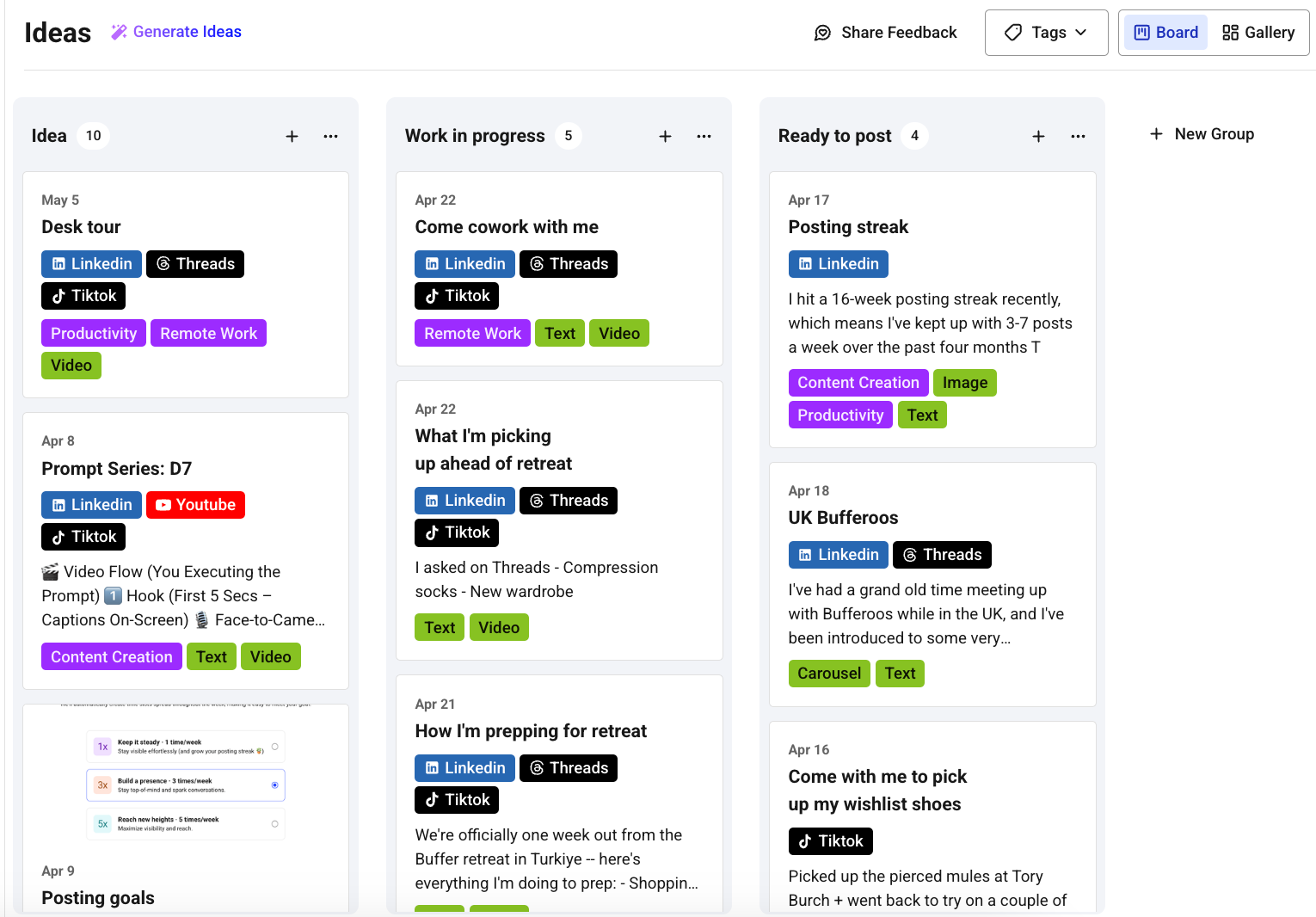
The goal wasn’t to have a perfect system — just something that keeps ideas from falling through the cracks.
Step 2: I brain-dumped as many ideas as I could (without overthinking them)
Once I had my pillars, I moved straight into idea mode.
I didn’t sit down to write polished drafts — I gave myself 30–45 minutes to jot down every post idea that came to mind. I wasn’t worried about format, platform, or even if it was a “good” idea. I just wanted to get them out of my head and into my system.
Some were reflections I could turn into text posts (I’ve been doing a lot of these). Others were simple enough to film as talking-head videos or pair with B-roll later. A few were just lines I didn’t want to forget.
Here’s a quick sample of what ended up on the list:
- “Come with me to pick up wishlist shoes”
- “What I’m packing for the Buffer retreat”
- “Visa stress as a remote worker from Nigeria”
- “How I started my career”
I added them into Buffer as they came to me — no pressure to finish anything, just enough to revisit later when I had more time or energy.
Here’s how it’s been going: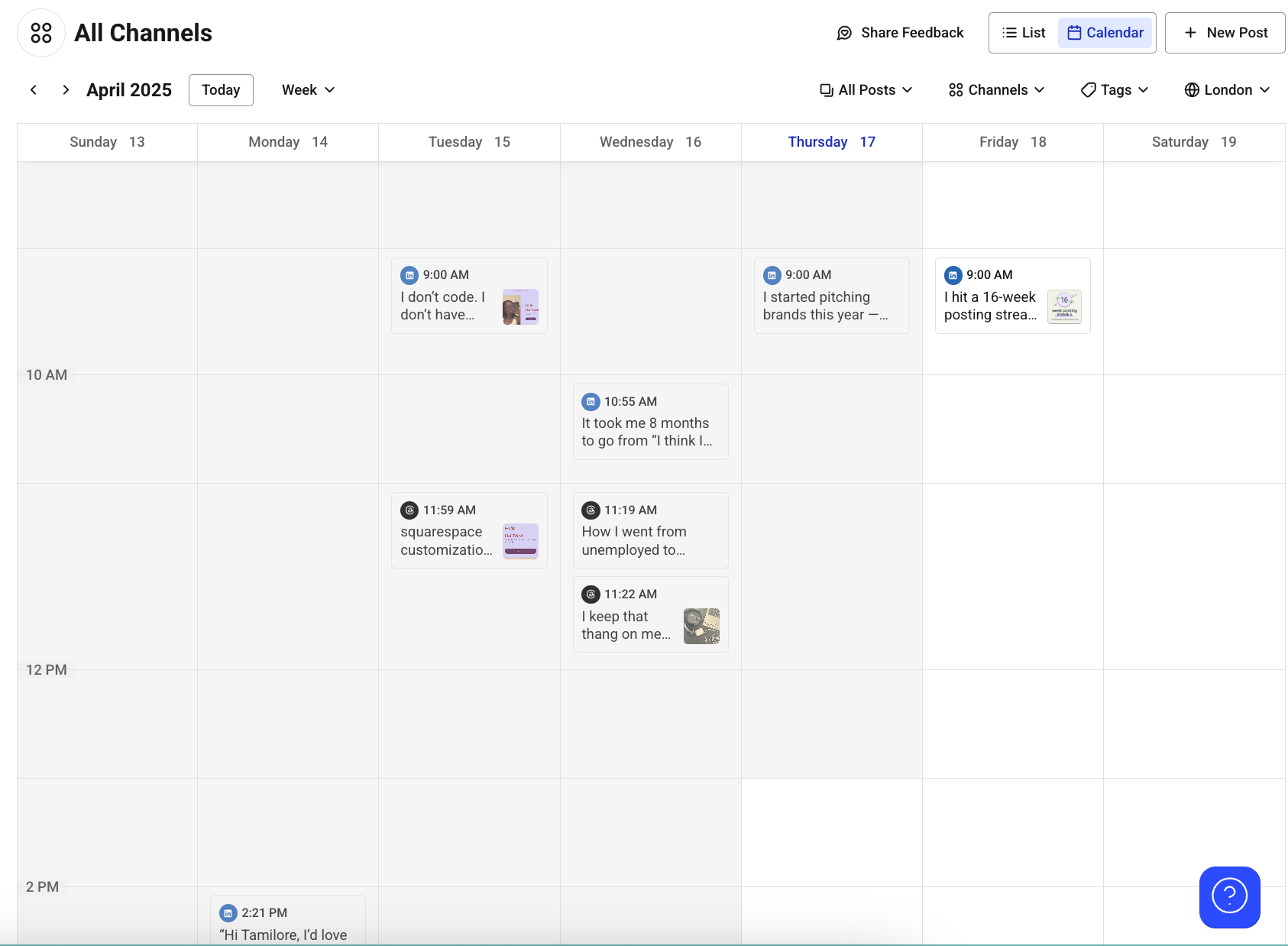
Giving yourself a space to capture ideas is half the work. It means you’re never starting from zero when you sit down to create.
Even if you only get 5–10 rough ideas from a quick brain-dump session, that’s 5–10 decisions you’ve already made. And that alone makes your next content day easier.
Step 3: I created what I could — and made space for what I couldn’t
Once I had a list of solid ideas, I looked at what I actually had the time and energy to create that day.
My priority? Text posts. They’re quick to outline, perform well on LinkedIn and can be modified Threads, and don’t require me to change outfits or find perfect lighting. I wrote rough outlines for 4–5 posts right inside Buffer — a hook, a few main points, and a CTA. Those posts have gotten me through a couple of busy initial weeks.
If I had a good idea but wasn’t sure how to shape it yet, I’d drop it into ChatGPT to help me build a better structure. I wasn’t trying to finish every post, I was building drafts I could polish on the go.
Once I had those outlined, I moved on to light video work:
- Filmed a few quick talking-head clips based on my strongest ideas
- Captured B-roll like packing, walking, or desk scenes I could use with voiceover
- Created content folders in my camera roll, labeled by topic and ready to be filled up when I had the content ready
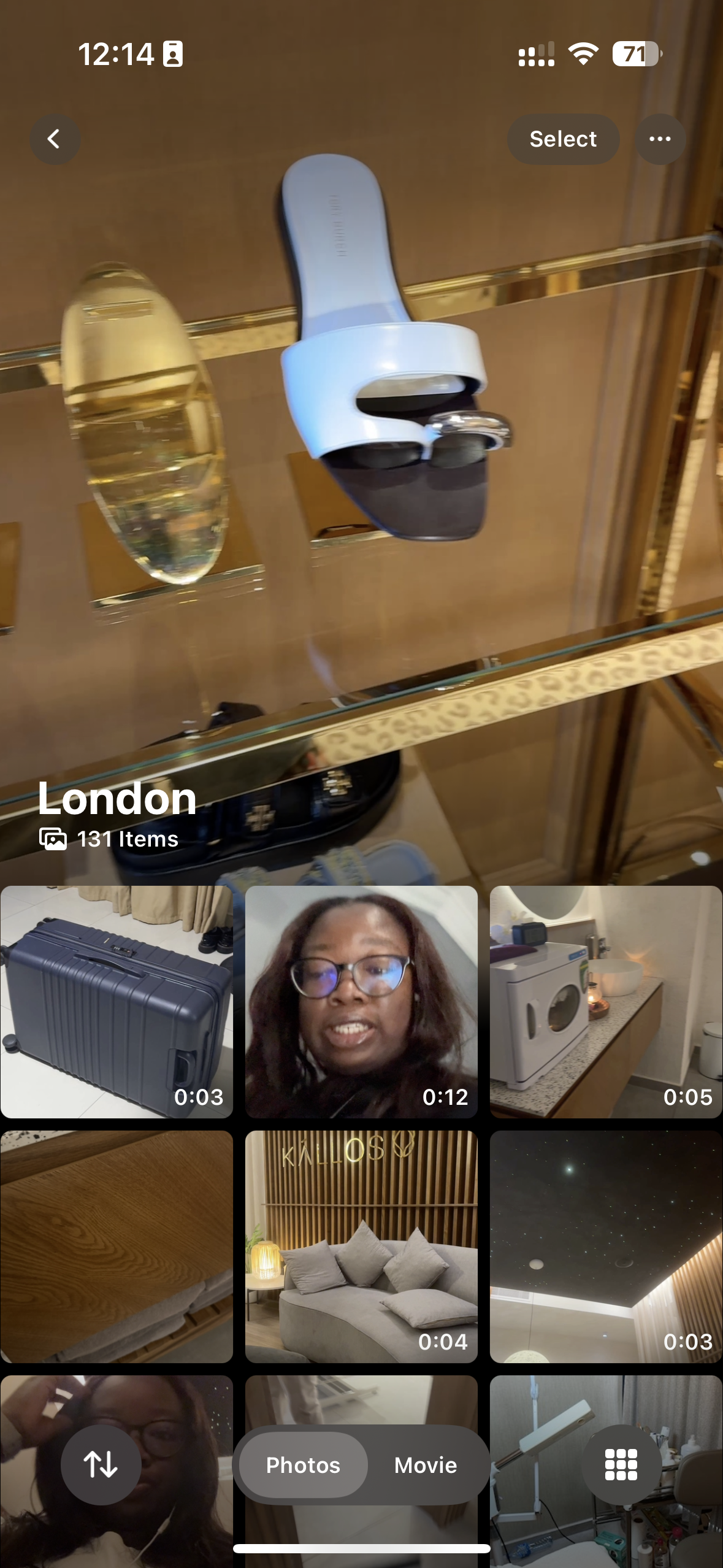
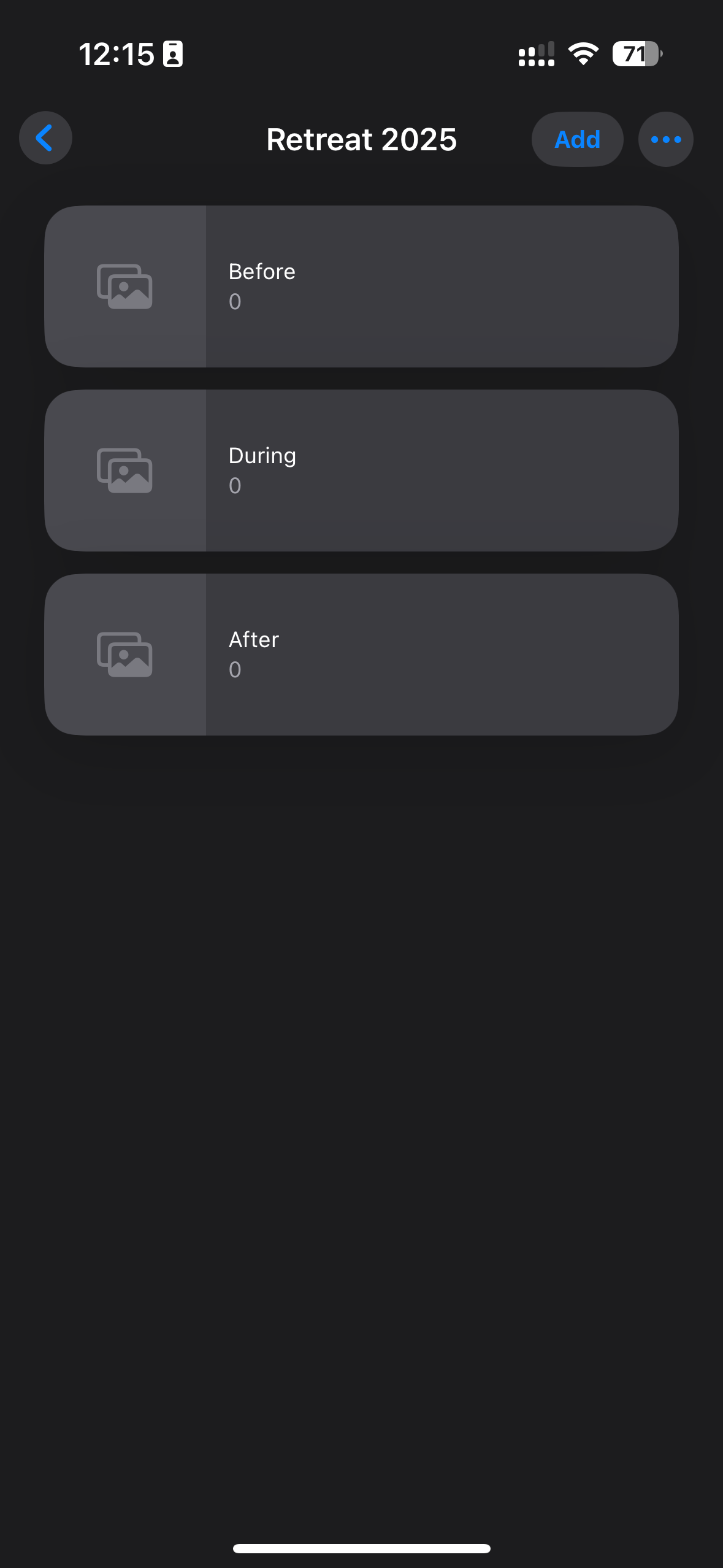
For any videos I had time to edit, I used CapCut Mobile to trim, add captions, and export — but only if I had the energy. I wasn’t trying to post them immediately. I just wanted to have content ready to go for those in-between moments where I may not have time to film or edit.
This mix of easy-to-finish text posts and flexible video assets gave me options — and options are an antidote to burnout when you’re juggling life and content.
Step 4: I did the admin work that makes posting easier later
This part doesn’t look impressive. There’s no final post to show for it. But honestly? It’s the thing that makes the rest of the system work.
Once I had outlines and video clips ready, I switched into setup mode — the unglamorous but essential part of batching. I asked myself: What can I do right now to make future posting feel effortless?
Here’s what that looked like:
- I uploaded content into Buffer: Even if a post wasn’t fully written yet, I created an idea for it. I gave each one a working title, added notes or placeholder text, and dropped in the correct platform and format tag. That way, I could see how my week was shaping up at a glance — and I wasn’t trying to remember everything from scratch later.
- I kept my outlines rough (on purpose): Instead of over-editing in the moment, I made quick bullet-point outlines for each idea — a hook, a few talking points, and a line or two for a call to action. I knew I could polish the copy later, or even tweak it to suit the mood of the day.
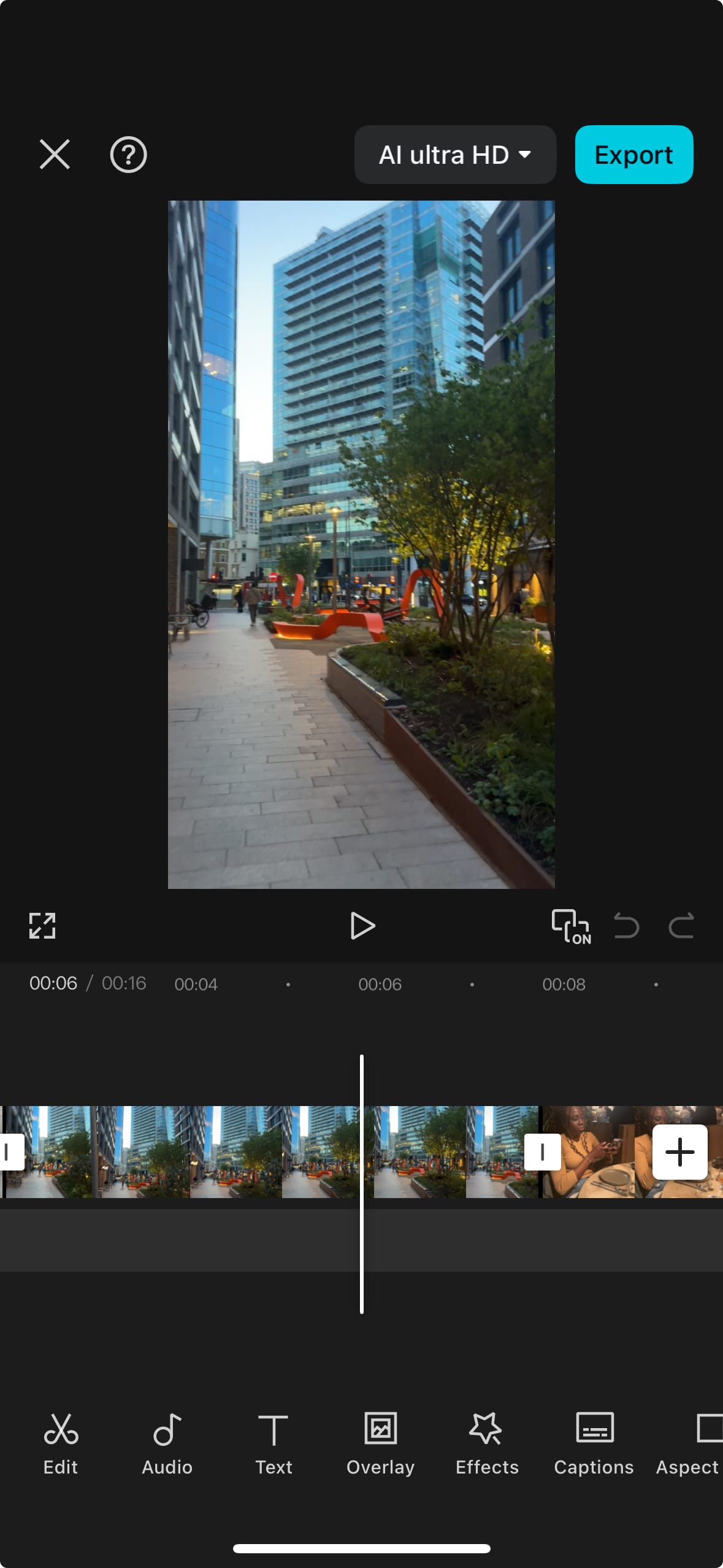
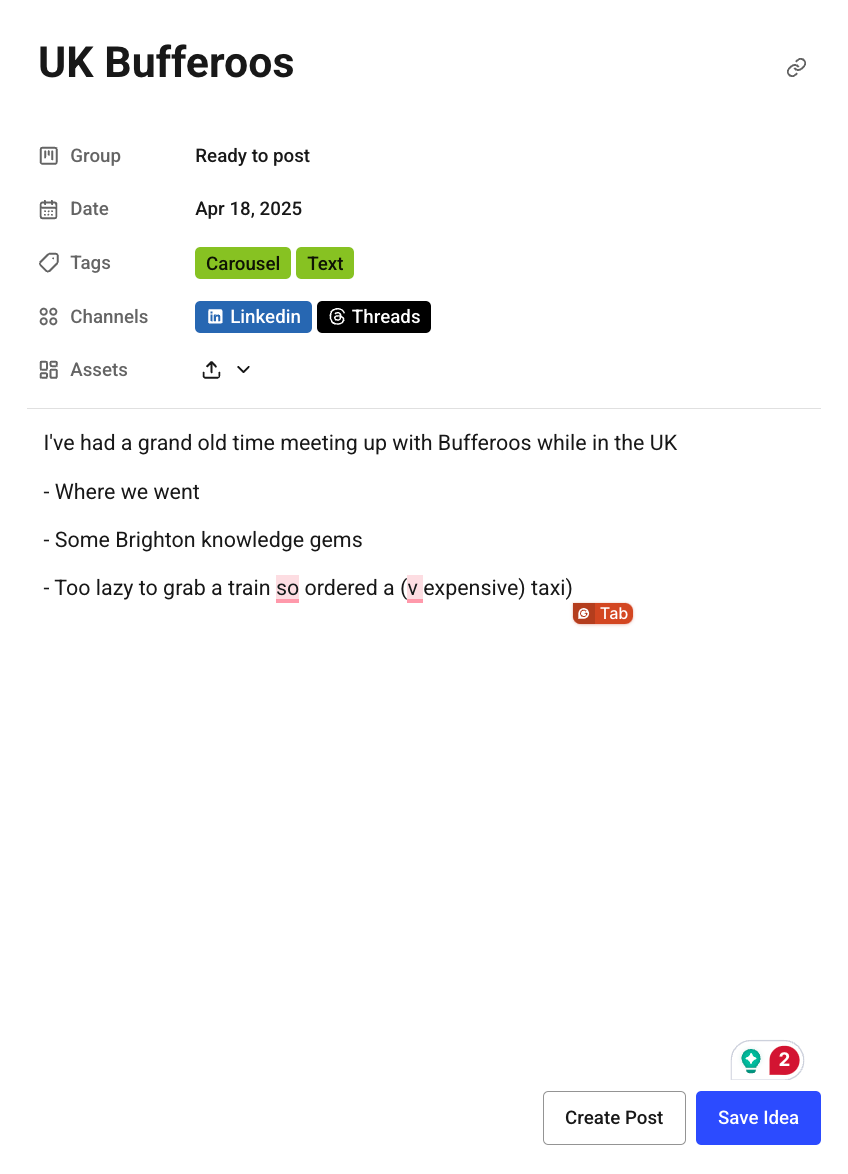
- I set reminders to stay consistent: I blocked out two short “content check-in” slots in my calendar for the weeks I would be traveling — 15–30 minutes to finish a caption, polish a hook, or schedule something that felt relevant. I also added reminders for spontaneous ideas I didn’t want to forget, like “record retreat reaction” or “share photo from the team dinner.”
This process took less than an hour, but it made the biggest difference. Even if I didn’t create anything new for a few days, I knew I had options lined up — and a plan for what to do with them.
Step 5: I built a mini content buffer — just in case
After organizing everything, I asked myself one last question: What happens if I have a low-energy day next week — or just don’t feel like posting?
That’s where the buffer comes in. Not our platform (though yes, also that) — I mean the backup content. The stuff you can post without much effort, that still feels aligned and valuable.
Here’s what I included in mine:
- 2–3 short text posts that didn’t tie to anything time-sensitive
- A few extra video clips I could quickly caption or repurpose
- One “lazy post” — like a quote, soft reflection, or quick photo dump
- A list of loose ideas I could revisit for a jolt of inspiration
Here’s how I used one of these seemingly random videos with a trending audio: tried on + bought the @TORY BURCH weird toe shoes (aaand the pierced mules












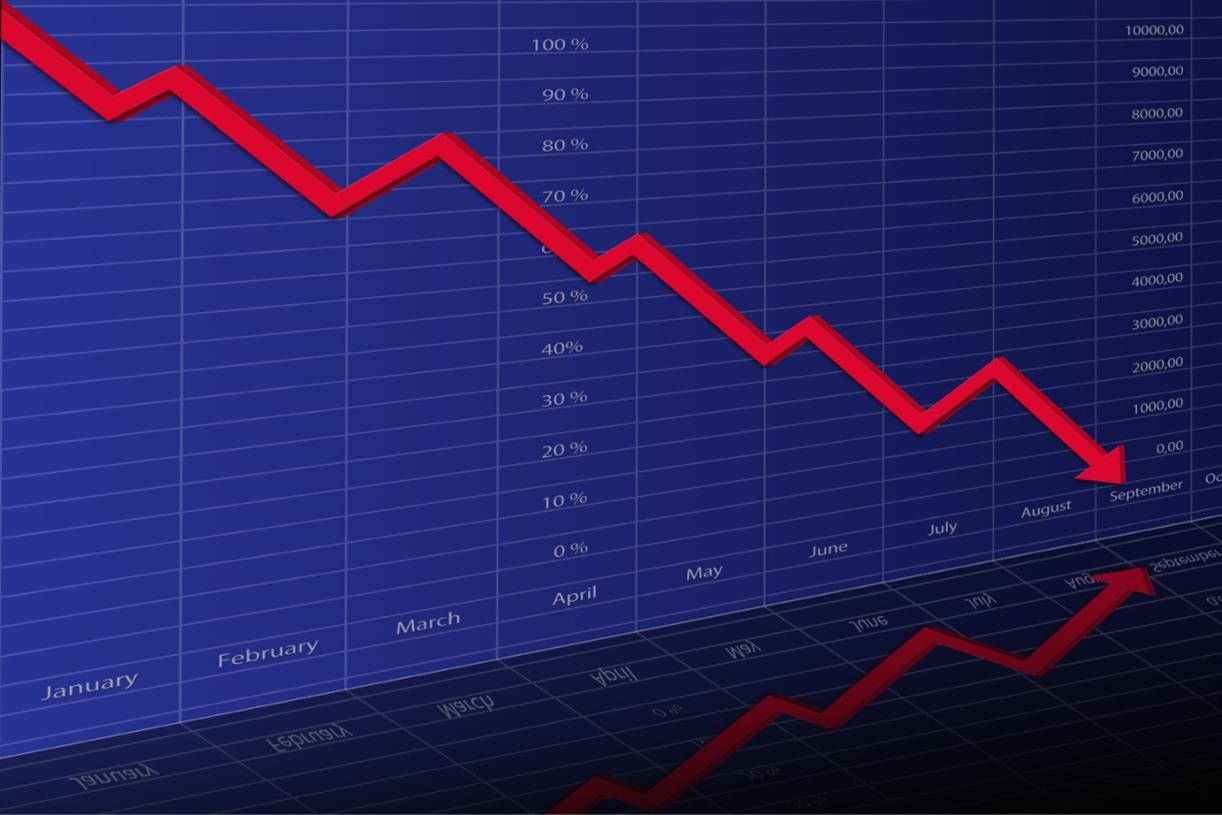


























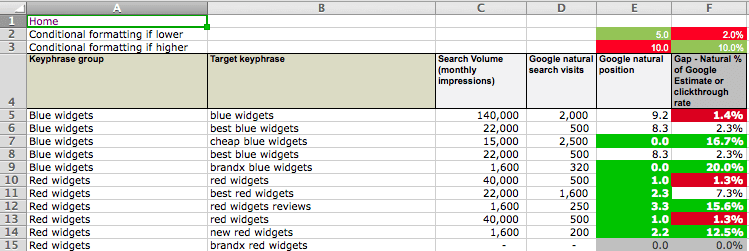








![How Marketers Are Using AI for Writing [Survey]](https://www.growandconvert.com/wp-content/uploads/2025/03/ai-for-writing-1024x682.jpg)



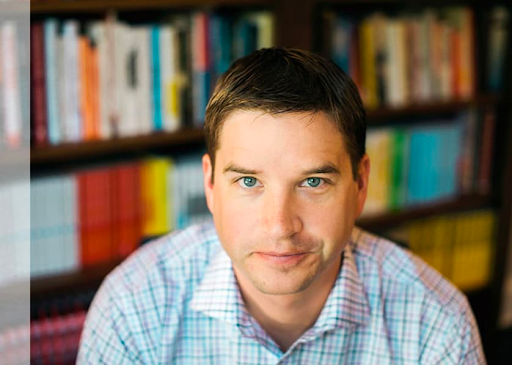











































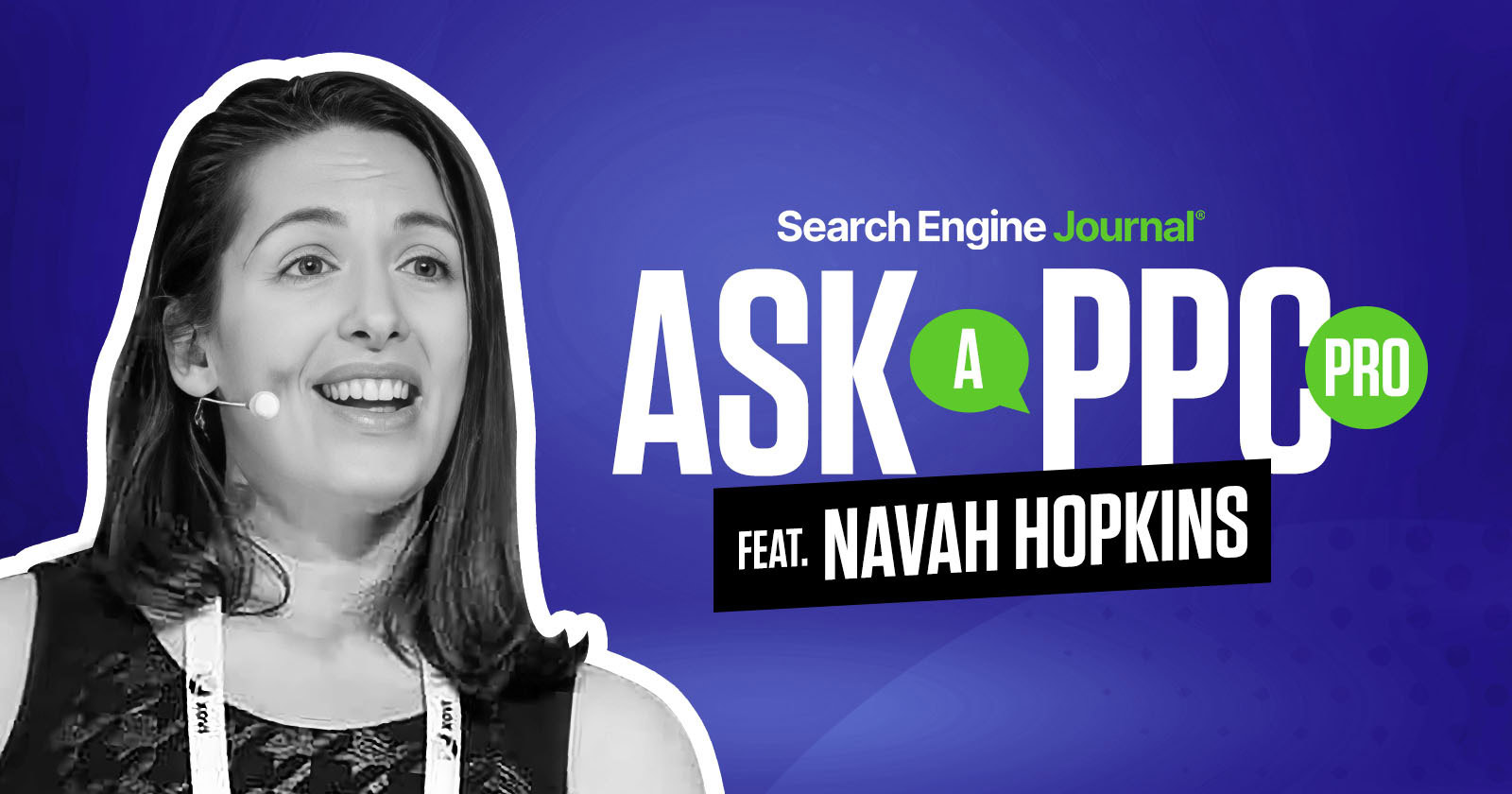

![31 Top Social Media Platforms in 2025 [+ Marketing Tips]](https://static.semrush.com/blog/uploads/media/0b/40/0b40fe7015c46ea017490203e239364a/most-popular-social-media-platforms.svg)







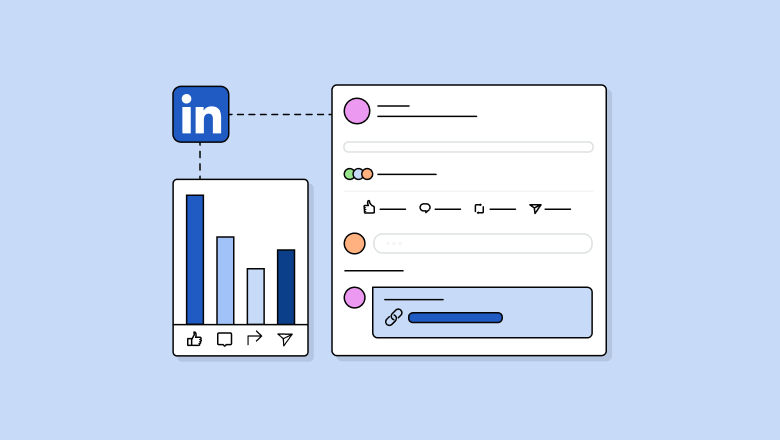












![Gated Content: What Marketers Need to Know [+ Examples]](https://www.hubspot.com/hubfs/UNGated%20Content.png)



